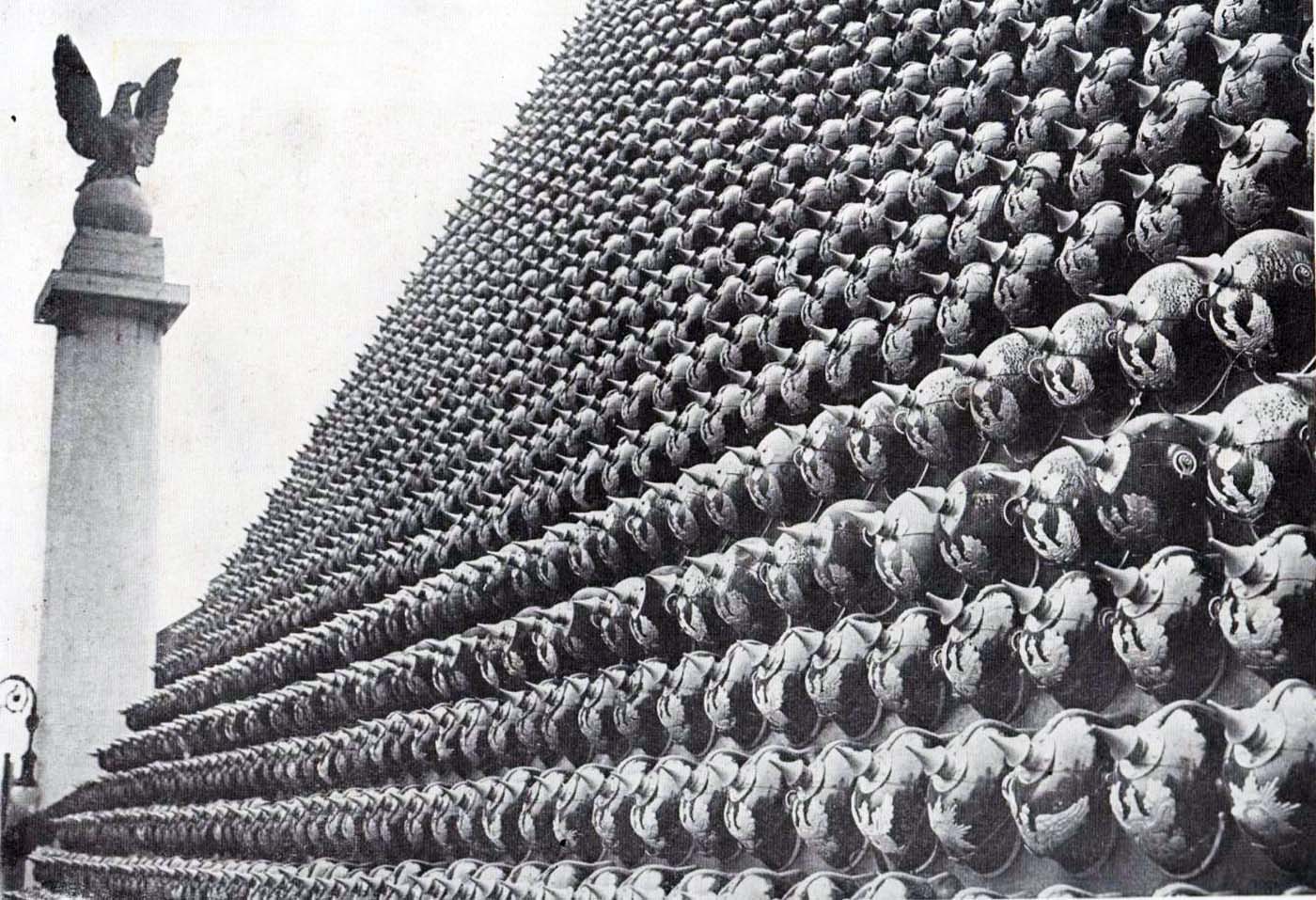
Pyramid of WWI German helmets at Grand Central, 1919.
This interesting picture, taken in 1919, shows employees of the New York Central Railroad at a celebration in Victory Way, showing off a pyramid of recovered German helmets in front of Grand Central Terminal. There were over 12,000 German Pickelhaubes on the pyramid, sent from warehouses in Germany at the end of the war.
Victory Way was set up on Park Avenue to raise money for the 5th War Loan, and a pyramid of 12,000 helmets was erected at each end, along with other German war equipment. There is a hollow supporting structure underneath the helmets.
While many of the image’s details have been confirmed, the figure that was placed at the top of the pyramid is still subject to speculation. Some sources believe that it’s Nike, the Goddess of Victory. There are also two cannons located at the left and right of the helmet pyramid.
Beyond a well-framed shot, this photograph is interesting for its symbolism, sociological impact, and historical significance. Many people may find the sight of so many enemy helmets too macabre with each helmet representing a dead or captured soldier.
And how does such a public display affect the psyche of citizens? To be located near Grand Central Terminal means it would have been seen by a lot of people. The cannons in the foreground, the numerous flags, the eagles atop the pillars; the symbolism in this shot is very powerful.

There is a hollow supporting structure underneath the helmets.
All helmets produced for the infantry before and during 1914 were made of leather. As the war progressed, Germany’s leather stockpiles dwindled. After extensive imports from South America, particularly Argentina, the German government began producing ersatz Pickelhauben made of other materials.
In 1915, some Pickelhauben began to be made from thin sheet steel. However, the German high command needed to produce an even greater number of helmets, leading to the usage of pressurized felt and even paper to construct Pickelhauben.
During the early months of World War I, it was soon discovered that the Pickelhaube did not measure up to the demanding conditions of trench warfare. The leather helmets offered virtually no protection against shell fragments and shrapnel and the conspicuous spike made its wearer a target.
These shortcomings, combined with material shortages, led to the introduction of the simplified model 1915 helmet, with a detachable spike. In September 1915 it was ordered that the new helmets were to be worn without spikes, when in the front line.
Beginning in 1916, the Pickelhaube was slowly replaced by a new German steel helmet (the Stahlhelm) intended to offer greater head protection from shell fragments. The German steel helmet decreased German head wound fatalities by 70%.